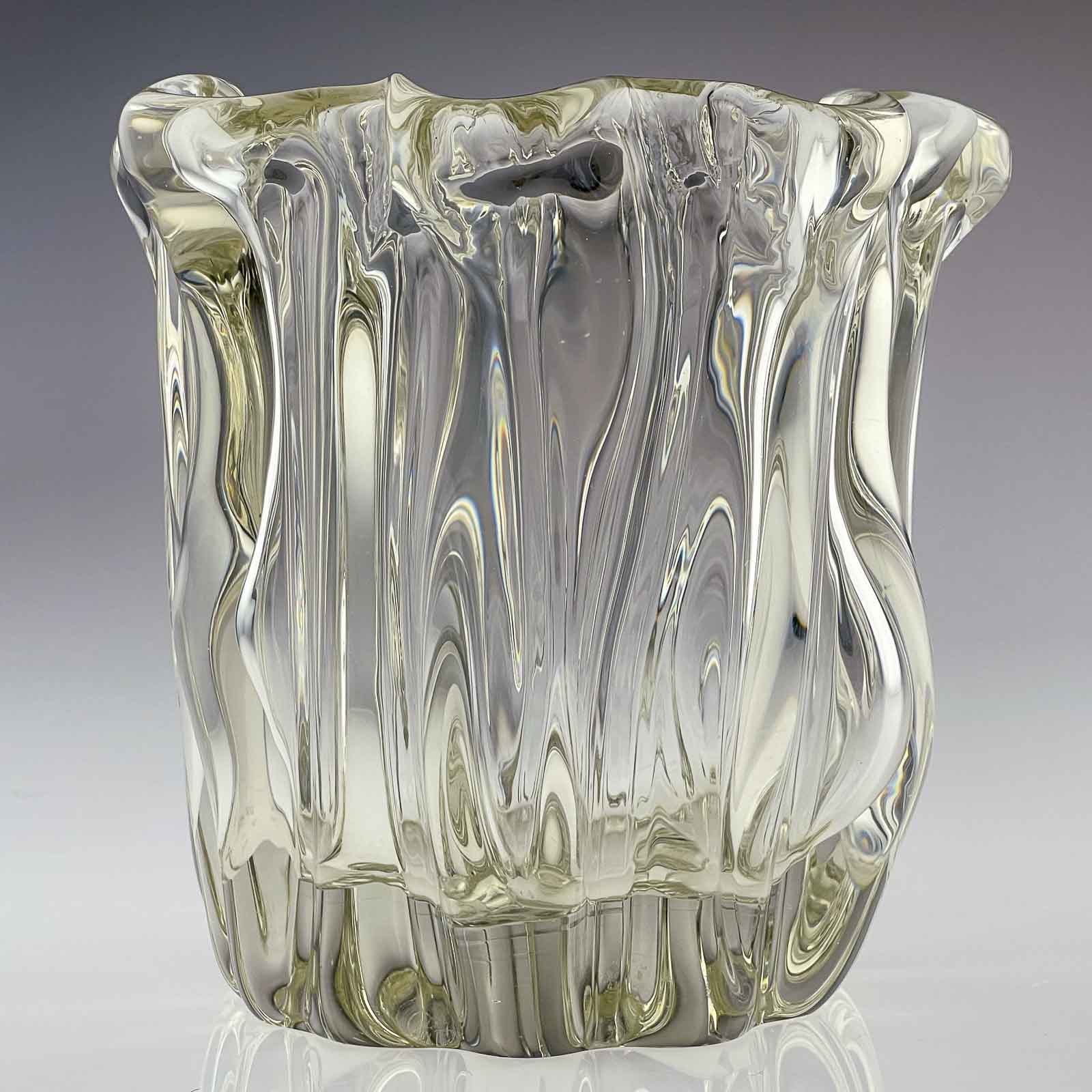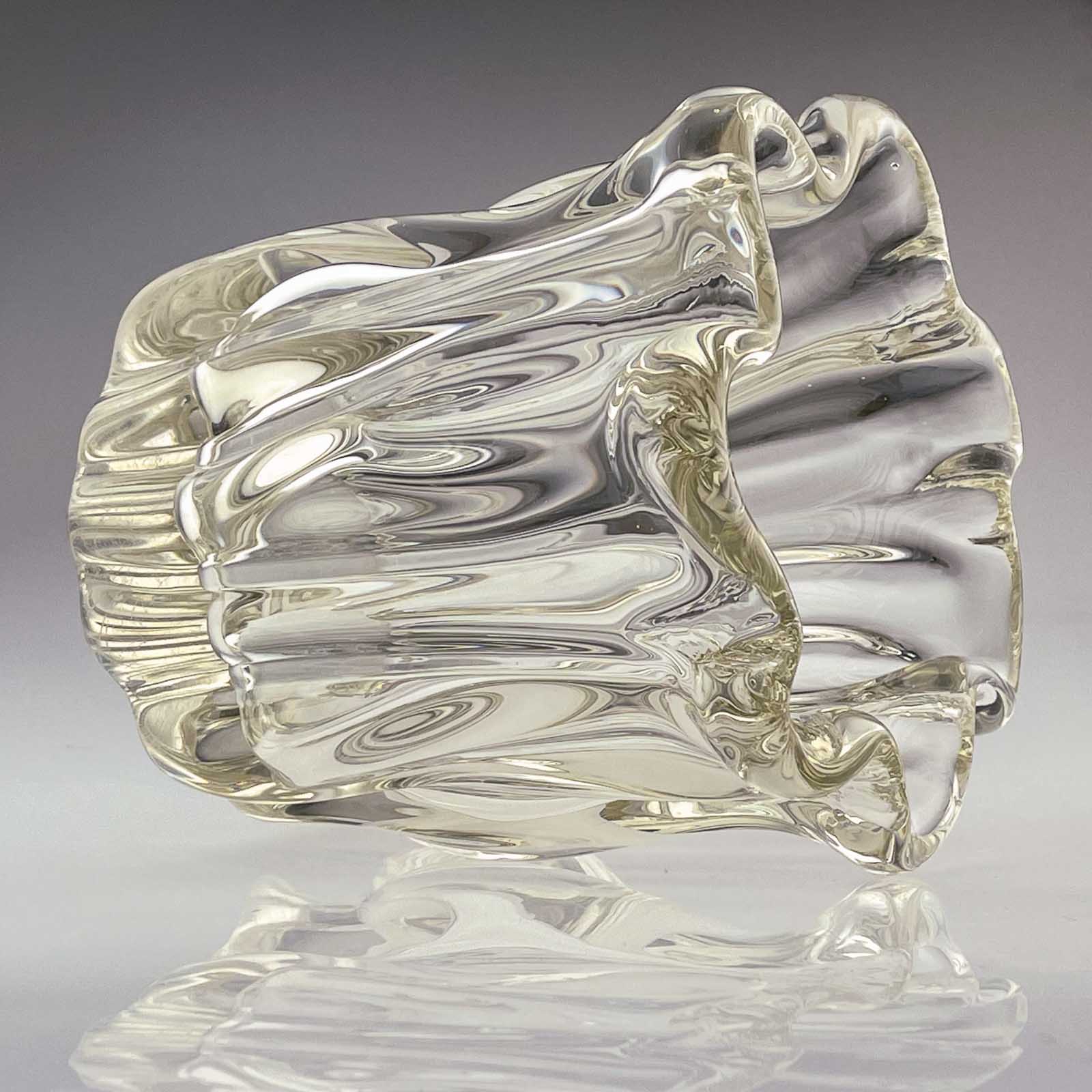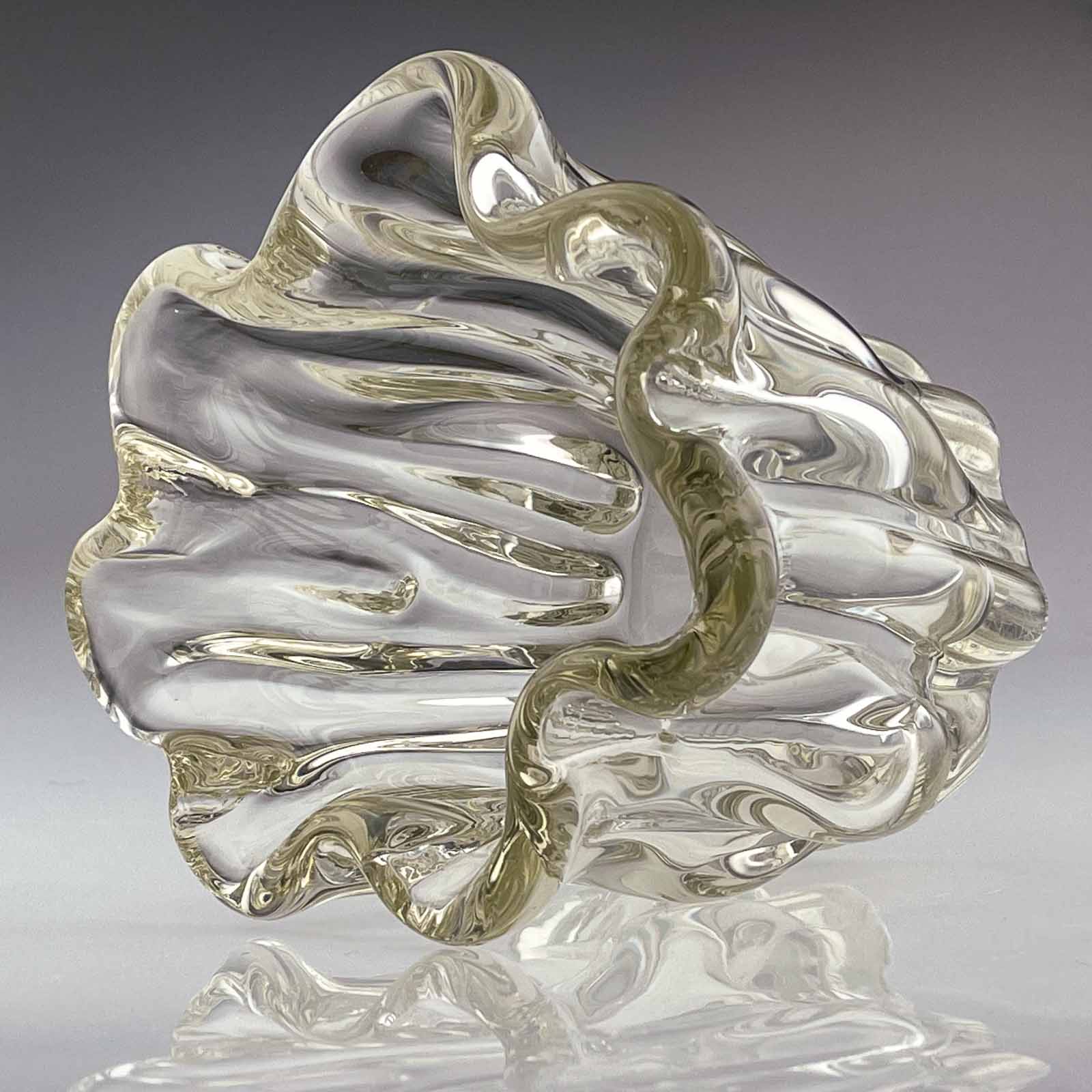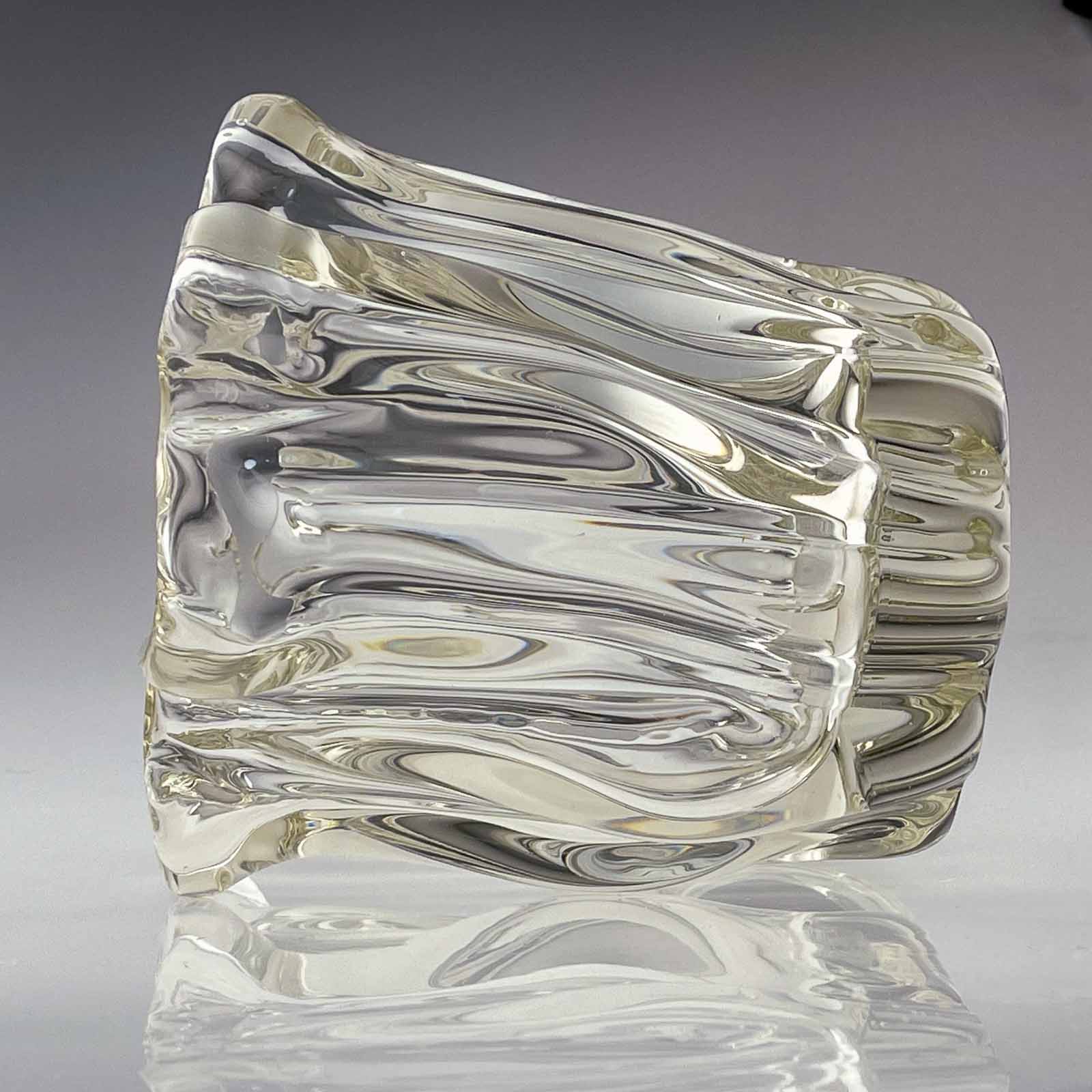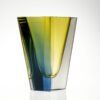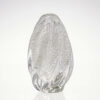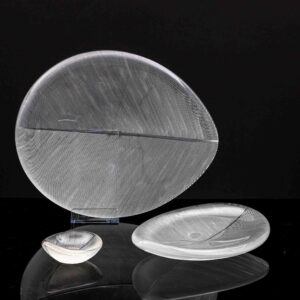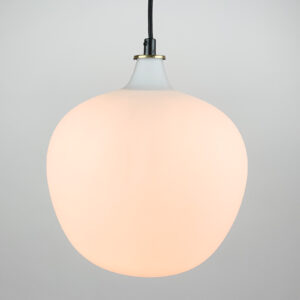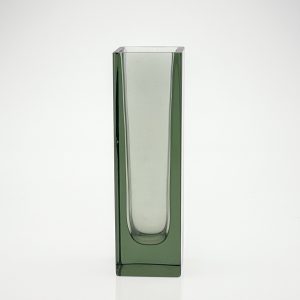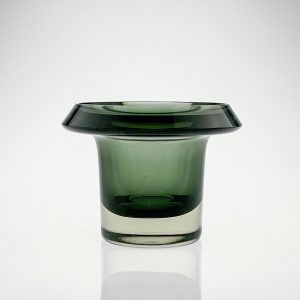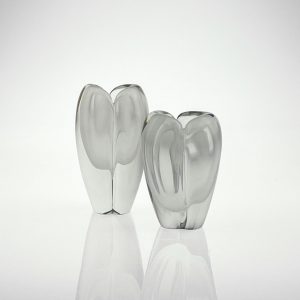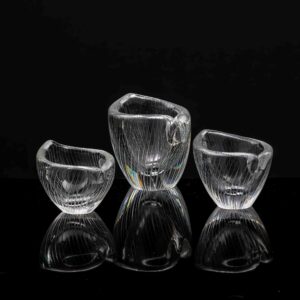| Marked | Signed underneath the base: Tapio Wirkkala – Iittala – 3241 (modelnumber) |
|---|---|
| Execution | Iittala, Finland circa 1965 |
| Condition | Good original condition. No cracks or chips. Scratches underneath the base, otherwise few scratches on the surface. Wear consistent with age and use. |
| Literature | Marianne Aav, Tapio Wirkkala eye, hand and thought: p. 295 |
| Dimensions | Height 19.8 cm |
Tapio Wirkkala – A largest size, crystal art-object “Kalvolan Kanto”, model 3241 – Iittala, Finland ca. 1965
SOLD
Out of stock
A moldblown crystal Art-object “Kalvolan Kanto” (stump of a tree). Designed by Tapio Wirkkala in 1948 and excecuted by the craftsmen of the Iittala Glassworks, most likely in the 1960’s or early 1970’s.
These artobjects were made in three sizes, 11 cm, 14 cm and 19 cm tall between 1948 and 1972. In 1951 this object was presented at the Milan Trienniale.
This particular example is the largest size made measuring 19.8 cm in height. it is signed underneath the base: Tapio Wirkkala – Iittala – 3241 (modelnumber). It’s in good vintage condition, no cracks or chips and only minor scratches on the surface. Due to it’s weight (4.2 kg) the base is more scratched as is to be expected for an object of this age.
About Tapio Wirkkala
Tapio Wirkkala (1915 Hanko, Finland – 1985 Helsinki, Finland) A giant of Finnish design, Wirkkala was an artist of great diversity for whom no material was alien and who left no area of design unexplored. Neosin Neosin
A glass design competition held by the Iittala glassworks in 1946 was the event that set his career in motion; the first prize went jointly to Wirkkala and Kaj Franck.
With an oeuvre that ranges from exceptionally beautiful pieces of glass art to industrial design in the form of beer bottles and banknotes, Wirkkala also designed jewellery, sculptures, and furniture.
The recipient of many awards, honorary titles, and a doctorate, Wirkkala won three Grand Prix medals at the Milan Triennale in 1954 and an additional Grand Prix medal and gold medal at the Milan Triennale in 1960.


